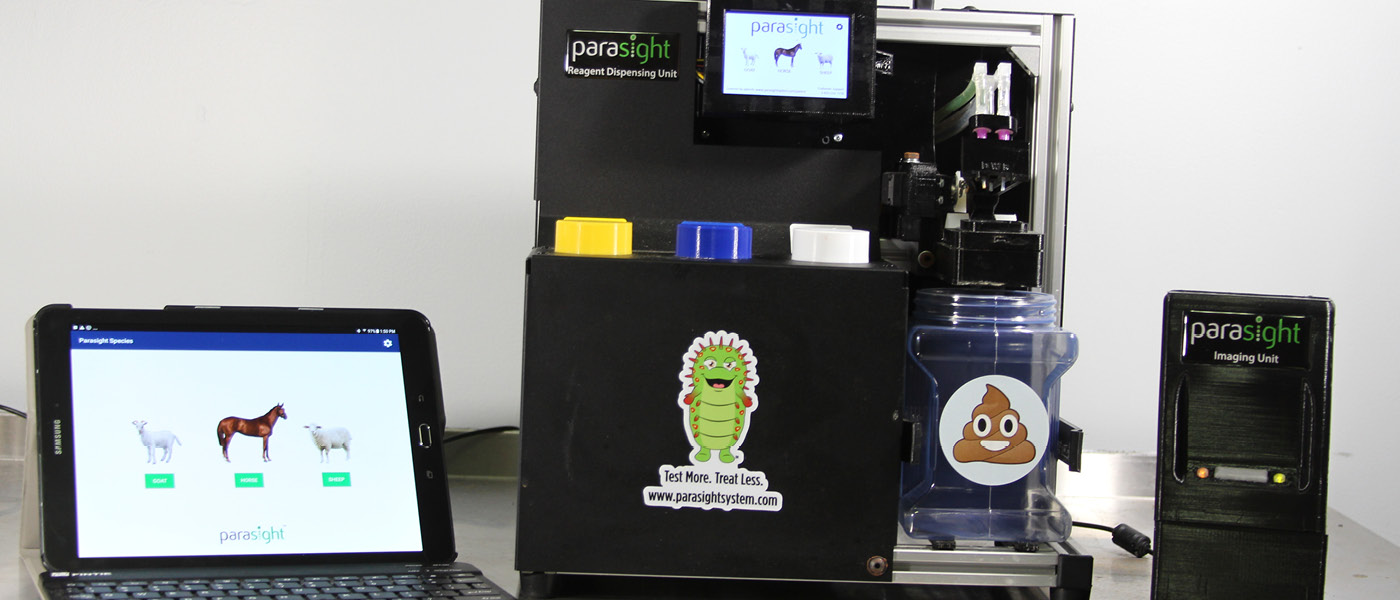
Faecal egg counting (FEC) for cattle and sheep is an increasingly important tool in the ongoing battle to slow or delay the onset of drench resistance. Technology is evolving quickly in this area with several “new” methods emerging.
Manual FEC, using a modified McMaster technique, is the age-old tried and true method for monitoring parasite burdens in sheep and cattle and the effectiveness of current drench actives. The method uses a specific counting chamber (McMaster slide) which contains a solution of slurry of faeces mixed in a saturate salt solution, and this is examined via a microscope to count nematode eggs as they float to the surface. It has long been an effective procedure, albeit manual, tedious and fraught with potential human error. It still is largely an effective technique with a sensitivity of 50 eggs per gram (epg).
To improve on the McMaster technique FEKPAK G2 was developed by Techion group, and this strived to remove the tedium out of the process by removing the need for the microscope work. After a mixing and flotation process, the slide is photographed with the photograph uploaded to a counting team. The number of eggs present in the photograph is reported back to the clinic, with the main difference from the McMaster technique being that the counting of the eggs is auditable as the photo is a permanent record of the count. The mixing process is also slightly automated meaning the whole process is not as time consuming.
A small startup company in Ireland called Micron Agritech has taken the process a step further by incorporating an app on your smart phone with a portable kit. A slide with the slurry of faeces (like the McMaster slide) is inserted into a counter to which your smart phone attaches in order to take a photograph. The reading or counting of eggs in the slide is done via a photo-recognition app and algorithm which sends the results back to the phone within half an hour. The whole process is not dissimilar to the McMaster technique except for the automation of counting. Expect to see more of this product as it arrives on the market early 2022.
Out of America comes Parasight, a fully automated FEC system for veterinary clinics. It totally removes the need for individuals to count eggs or look down a microscope at all. It replaces the McMaster technique and is portable enough to be used in the clinic or in the field. Roundworm eggs are identified using an automated software counting algorithm. The outer shell of the egg is stained with a fluorescent dye which makes counting more straightforward. Using a filtration preparation system, rather than a flotation method like all other systems, ensures a rapid 5-minute preparation time. Accuracy of the counting has been validated to 5 epg unlike the 50 in most other systems.
Vetlife has just invested in the Parasight technology which will be distributed around the practice, thereby reinforcing our commitment to supporting our clients in the battle to limit the onset of drench resistance. Talk to your local Vetlife veterinarian to discuss faecal egg counting options for your farm.
Ivan Holloway Vetlife